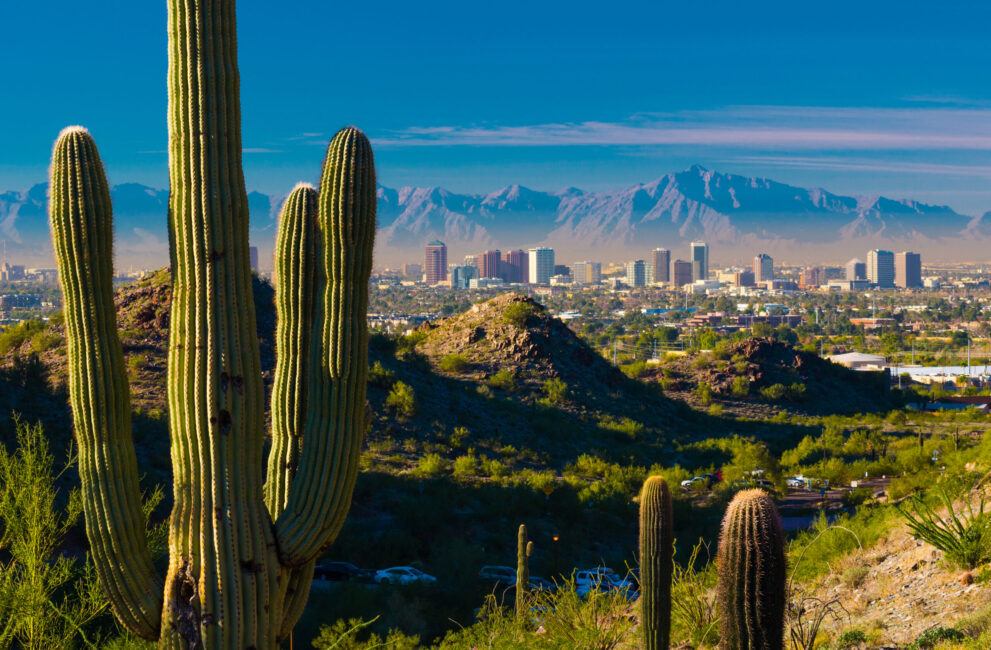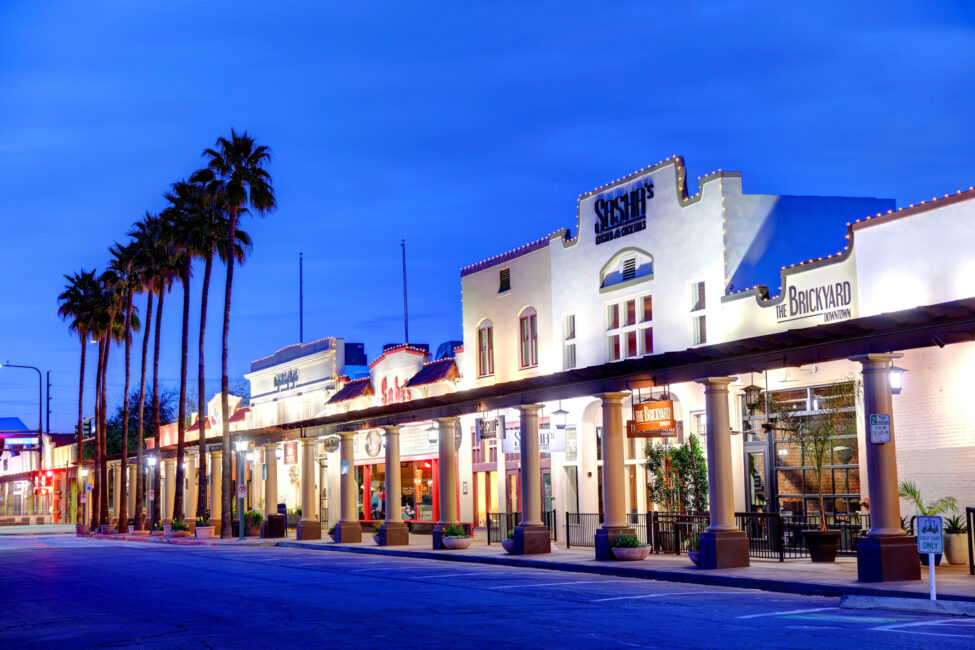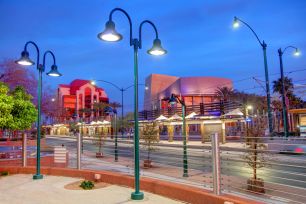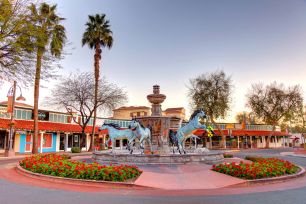Phoenix has earned an unwanted distinction: it ranks as the deadliest major city in America for pedestrians. The Arizona Department of Transportation reports that 307 people were killed in traffic accidents in Phoenix in 2023, with the city having the highest rate of deadly crashes and pedestrian deaths among the biggest cities in the country, even higher than Los Angeles and Dallas. Even more alarming, pedestrians are involved in 44% of all deadly crashes in Phoenix.
The numbers paint a disturbing picture. In 2021, 72% of the state’s pedestrian accidents happened in the Phoenix metro area, causing 162 fatalities and 1,133 non-fatal injuries. Shockingly, 100% of pedestrian accidents in Phoenix injured or killed a pedestrian. This crisis has been building for years, with pedestrian-related fatalities increasing by 40% between 2020 and 2021.
Understanding the Scope of the Problem
Arizona’s Statewide Challenge
Arizona consistently ranks among the worst states for pedestrian safety. Arizona had the nation’s second-highest rate of pedestrian fatalities in 2022, and Arizona’s pedestrian fatality rate stood at 4.17 deaths per 100,000 residents, the second-highest in the United States, trailing only New Mexico.
Recent data shows mixed results. While pedestrian fatalities fell by 12.3% in 2023 statewide, the 1,307 traffic fatalities in 2023 is the second-highest annual fatality total ever recorded in Arizona.
The Phoenix Metro Area’s Disproportionate Impact
Most of the state’s pedestrian and bicycle accidents happen in the Phoenix metropolitan area, making the Valley the epicenter of Arizona’s pedestrian safety crisis. Urban areas had nearly twice as many fatalities, with 853 deaths compared to 454 in rural areas, showing that roughly 65% of fatalities occurred in urban areas.
Key Contributing Factors to Rising Fatalities
1. Urban Sprawl and Infrastructure Design
Phoenix’s sprawling urban design is a fundamental factor in pedestrian deaths. Research shows that sprawling areas tend to have wide, long streets that encourage excessive speed. A pedestrian struck by a motor vehicle traveling at 40 mph has an 85% chance of being killed, compared with a 45% chance of death at 30 mph and a 5% chance at 20 mph.
Phoenix’s urban sprawl creates deadly conditions for pedestrians, with wide roads, high speed limits, and no crosswalks for miles. The city’s design prioritizes vehicle movement over pedestrian safety, creating a hostile environment for those traveling on foot.
2. Dangerous Road Design and High-Risk Locations
Certain areas of Phoenix have become particularly notorious for pedestrian fatalities. According to a 2019 Arizona Republic analysis, the deadliest spots in the Valley for pedestrians included 27th Avenue north of Bethany Home Road, McDowell Road between 40th and 43rd streets, Northern Avenue near 12th Street, Seventh Avenue near Buckeye Road, and Indian School Road between Seventh and 12th streets.
Grand Avenue (SR-60) has the highest pedestrian fatality rate, highlighting how major arterial roads pose exceptional risks to pedestrians.
3. Vehicle Speed and Driver Behavior
Speed remains a critical factor in pedestrian fatalities. Data shows speeding played a role in more than 20% of all crashes, and speed was reported in crashes resulting in 446 fatalities during 2023, accounting for 34.1% of the total.
City officials report seeing “a lot more road rage, a lot more impatience on the road, we see a lot more speeding.” This aggressive driving behavior has contributed significantly to the pedestrian safety crisis.
4. Vehicle Design: The SUV Factor
The increasing prevalence of larger vehicles has made pedestrian accidents more deadly. SUVs, which make up an increasingly large share of the vehicle fleet, are more likely to kill pedestrians than cars. The share of SUVs in the U.S. passenger vehicle fleet rose to 29 percent from 21 percent between 2009 and 2018.
Fatal single-vehicle crashes involving SUVs striking pedestrians increased 81 percent from 2009 to 2016, more than any other type of vehicle. Earlier research had shown that SUVs, pickup trucks and passenger vans were 2-3 times more likely than cars to kill a pedestrian in the event of a crash.
5. Socioeconomic and Environmental Factors
Several factors contribute to the increasing number of pedestrian accidents in Arizona, such as infrastructure challenges. Rapid urban growth has led to more vehicles and pedestrians sharing the same spaces. Unfortunately, infrastructure development hasn’t always kept pace, resulting in areas lacking adequate sidewalks, crosswalks, and pedestrian signals.
The city’s High Injury Network established a correlation between crashes and underserved communities impacted by lower income and less vehicle access.
Phoenix’s Response: Vision Zero Initiative
The Vision Zero Commitment
In 2022, Phoenix adopted Vision Zero, which pledges money and resources to end traffic deaths, with the city aiming to reduce traffic deaths to zero by 2050. Phoenix’s plan includes the “4E approach” to make roads safer for all, which includes evaluation, engineering, enforcement and education.
Current Progress and Challenges
The results have been mixed. While the number of crashes resulting in serious injuries is down, deadly collisions have been on an upward trend since 2015. Arizona’s Family Investigates has found the city is missing several goals, including reducing the number of nighttime crashes and those involving pedestrians.
Infrastructure Improvements
Phoenix has secured significant funding for safety improvements. In 2023, the program received a $25 million grant for the ReVISIONing Indian School Road project. The project will focus on the Indian School Road corridor between 91st and 39th avenues. Safety implementations include adding sidewalks, pedestrian crossing improvements and additional lighting.
Proven Solutions and Recommendations
Speed Reduction Initiatives
The Phoenix City Council is considering a proposal from the city’s streets department to lower speed limits by 5-10 mph in 12 areas. This is crucial because pedestrians are twice as likely to be killed in a collision when a car is traveling at 30 mph compared with 20 mph, and over five times more likely when the car is driving 40 mph.
Infrastructure Design Changes
Multiple initiatives are needed to reduce fatalities, including red-light enforcement and design changes such as pedestrian-leading intervals, which allow pedestrians to enter an intersection before lights change, and reducing lane widths to make it safer for pedestrians as well as drivers.
Community Engagement and Education
Phoenix has partnered with school districts, distributing over 2,500 pedestrian safety activity books to schools in Phoenix, and is implementing awareness campaigns with free road signs and flyers around communities to encourage safer driving.
The Path Forward
Phoenix’s pedestrian safety crisis requires urgent, comprehensive action. The city’s Vision Zero initiative represents a commitment to change, but more aggressive measures are needed. This includes:
Immediate Actions:
- Implementing widespread speed limit reductions on major arterials
- Adding more crosswalks and pedestrian signals in high-risk areas
- Increasing traffic enforcement, particularly for speeding and red-light violations
Long-term Solutions:
- Redesigning dangerous intersections and roadways identified in the High Injury Network
- Creating more pedestrian-friendly infrastructure in underserved communities
- Continuing community education and awareness campaigns
Legislative and Policy Changes:
- Advocating for federal vehicle safety standards that consider pedestrian protection
- Implementing complete streets policies that prioritize all road users, not just vehicles
Conclusion
Phoenix’s position as America’s deadliest city for pedestrians is not inevitable. While the challenges are significant – from urban sprawl to dangerous vehicle designs – cities around the world have successfully reduced pedestrian fatalities through committed action and comprehensive planning.
The human cost of inaction is too high. Every statistic represents a life lost, a family devastated, and a community made less safe. Phoenix has the tools, funding, and growing political will to address this crisis. What’s needed now is the sustained commitment to prioritize pedestrian safety over vehicle convenience.
For residents and visitors alike, understanding these risks and supporting safety initiatives can help create the momentum needed for meaningful change. Phoenix’s streets can be made safer, but only through collective action and unwavering dedication to protecting the most vulnerable road users.













